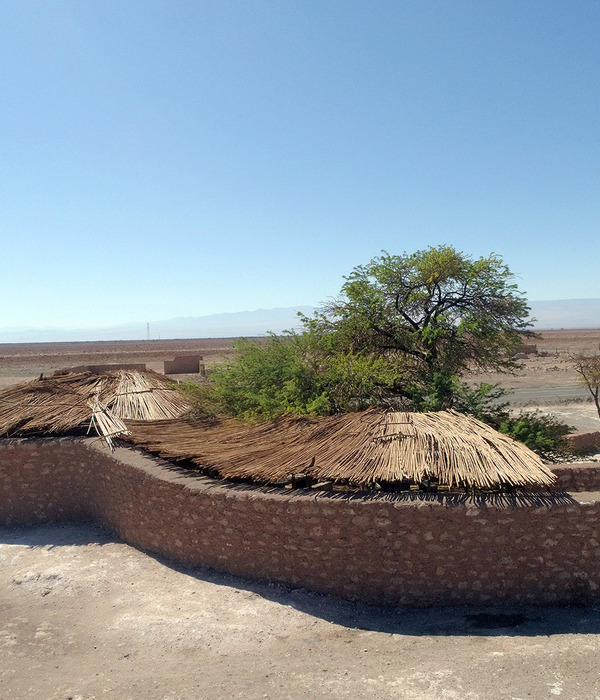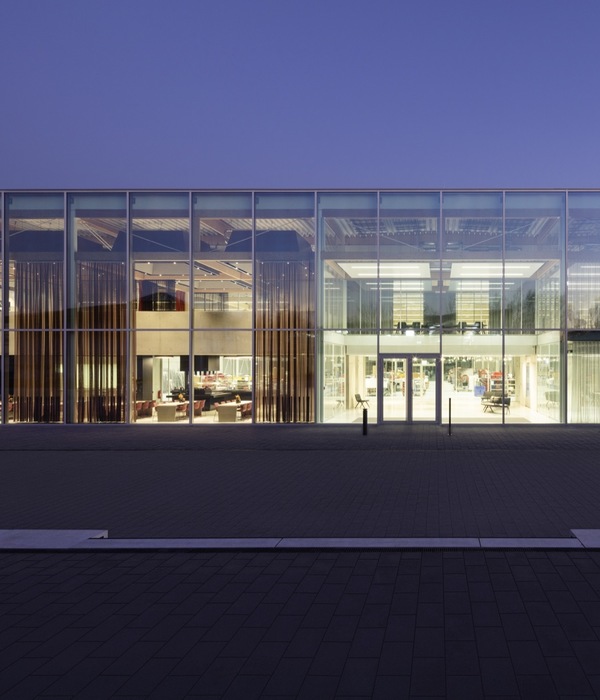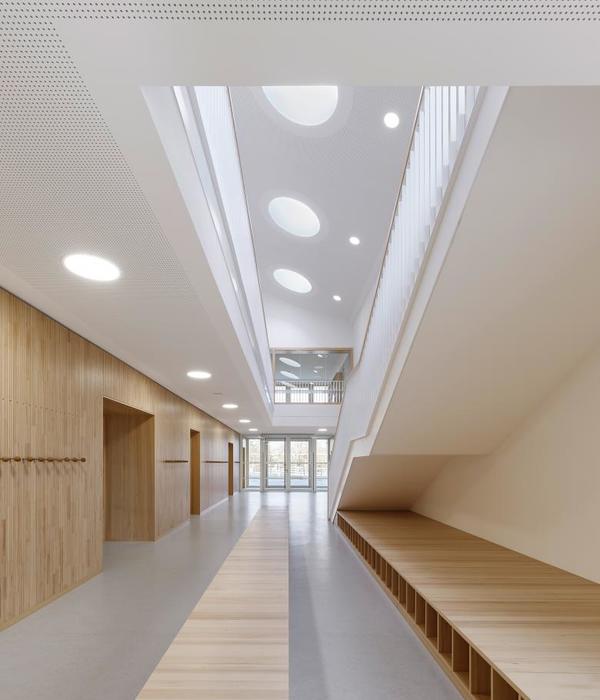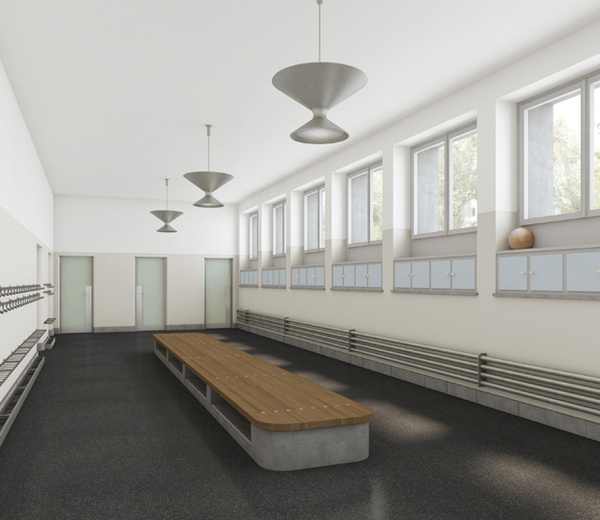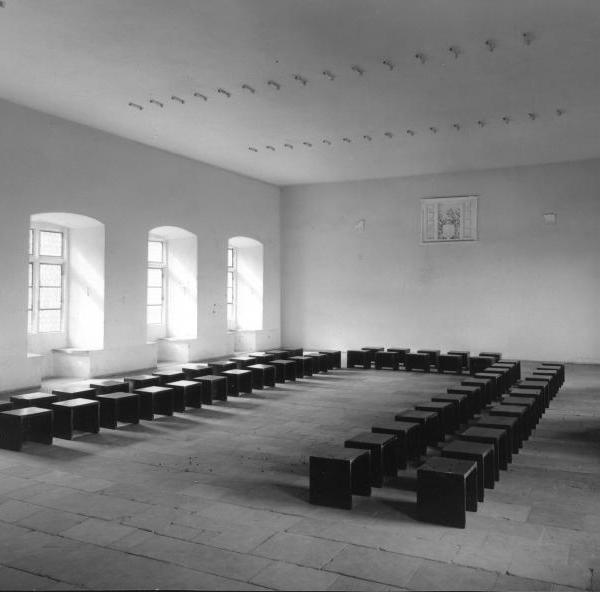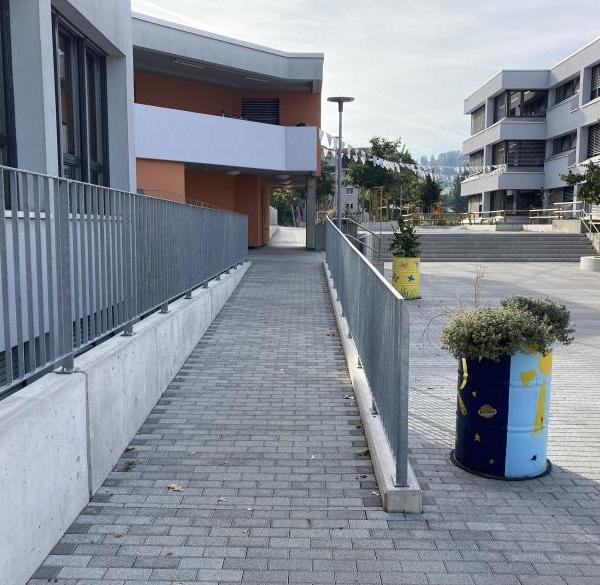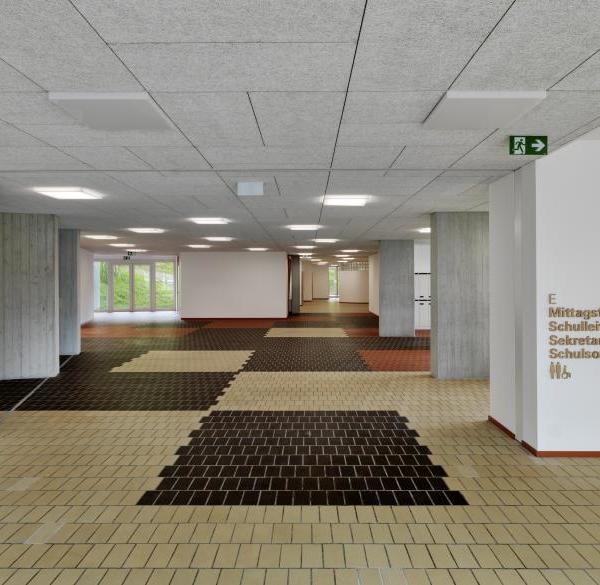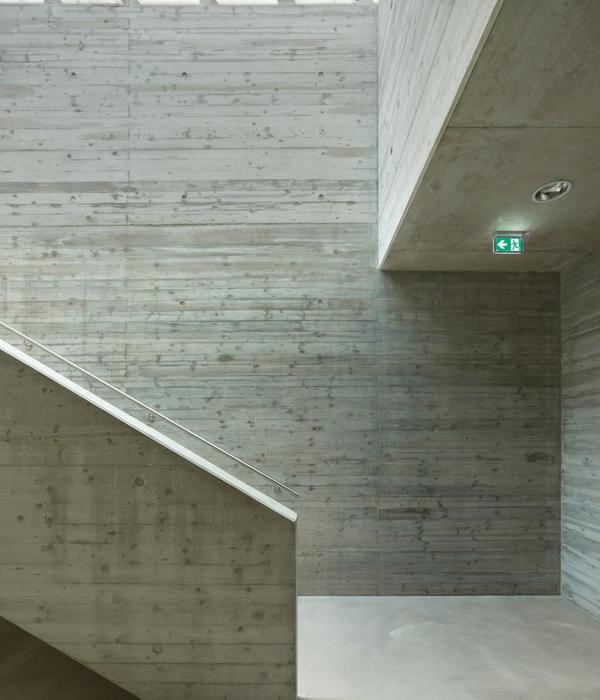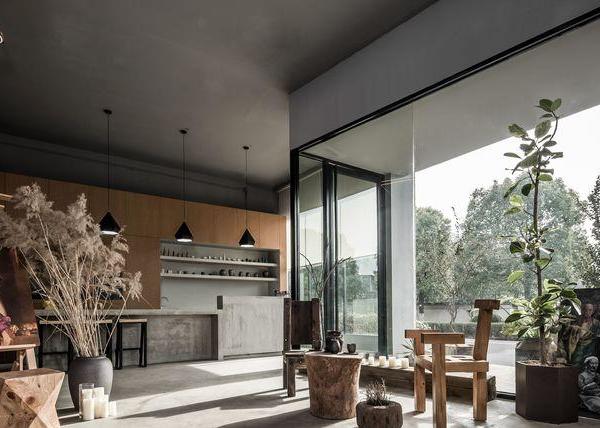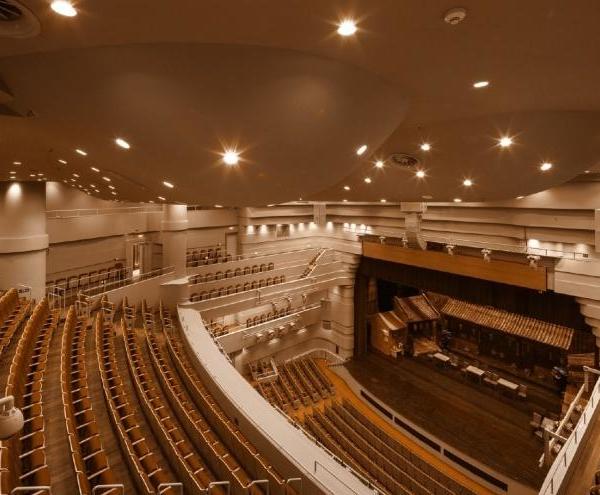- 项目名称:河源高级中学校园文化活动室
- 项目地址:河源市江东新区东环路旁河源高级中学校内
- 总建筑面积:208㎡
- 设计时间:2016年7月
- 竣工时间:2018年12月
- 设计方:深圳大学建筑设计研究院元本体工作室
- 公司网站:http:,,www.yuan-arch.com,
- 联系邮箱:616273927@qq.com
- 项目主持:蔡瑞定
- 施工图团队:马越,李晓波,刘畅,刘中平,李赫,韩国元,唐进
- 建筑摄影:吴清山
- 客户:河源高级中学
- 品牌:钢筋混凝土结构,玻璃,铝板,木地板
前言:当城镇的人们向往和风筝一样,飞往灯火通明的大城市,“本我”就是拉着风筝的线,紧连着大地。它牵动漫长年月的求学回忆,那片土地塑造今日的你,无论身处何方。
▼鸟瞰,aerial view ©吴清山
Foreword: When people in towns yearn for livings in big cities like a flying kite, the “self” is the string of the kite connected to the ground. It refers to the long long years of school, of which shapes you no matter where you are.
▼概念图,design concept illustration ©元本体工作室
快节奏的社会,在Prototype Trimming(原型微调)和Modularization(模矩化)的建筑思考下——学校,这所和那所总是相似的。一间宿舍住四人,一间教室坐四十五人,标配下的校园生活,十年如一日。 在一个陌生的城市,我们走进星巴克,能脱口而出一杯摩卡星冰乐;同理,方整的白色教学群,青草“凄凄”的足球场,成年前的第二个“家”,我们永远不会有太多记忆。记不得学校本身,作为一个场域,本该有的在地性。
In a fast-paced society, under the doing of prototype trimming and modelarization in architecture, schools are similar to each other. Four people in a dormitory and forty-five people in a classroom, school life remains unchanged like these rules of standard. As we walk into a Starbucks in a completely unfamiliar city, we blurt out a cup of mocha frappuccino without checking the menu. Similarly, we never have too many memories more than the neat white teaching buildings, the barren football field, for the second “home” before adult. The school lost its locality as a field.
▼山间鸟瞰,aerial view of the building in the mountain ©吴清山
本次实践,我们在广东河源的中学校区置入一个Catalysts(触媒),期待带来区域性的正向转变。它是定点定时课程生活外的一个隐匿计划,是于各地筑起高墙、远离自然的校区,打破隔阂的一次尝试。这里不是一个摆满桌椅的教室,“至此作为教室,别无其它可能”;它是一间半山坡的小房子,可以成为你想要成为的任何地方:社团排练、艺术展览、读书空间,甚至是看星星、看家家灯火的地方。学校里永远不缺一间教室或办公室,但缺一处可以闲散发呆、安静思考的场所。
We put a catalysts in the senior high school of Heyuan, Guangdong Province, expecting a positive regional change in this practice. It is a hidden plan against the life of fixed-point courses. It attempts to break the barrier of high walls away from the nature. Not like a classroom full of desks and chairs, the small house half hillside could be anywhere you want to be: community rehearsals, art exhibitions, reading space, even a place to watch stars and house lights. It never lacks a classroom or an office room in school, but a place for idle and quiet thinking.
▼室内场景动图,interior activities gif ©元本体工作室
一个城市最好的游记,总是带着新奇和敬畏,来访的异乡人所写。居住在城里的人向往乡间的静谧,乡间的人又理所当然于大山的馈赠。最早的山路是人走出来的,一步一步,带着对土地的敬畏和更高处风景的好奇。
设计大体分为两部分,登山台阶和山间小屋。山路,每一级,身体兴奋而疲惫,山间回馈给你更凉爽的清风;每一处,转角的平台,指示不同的远方,你以不同的高度观看城市的风光;每一条,跟随你折转起伏的矮墙,具象了这趟路途的心境,遮挡、涌现,直至看到高高挂起的明月。
The best travel notes of a city are always written by visitors of novelty and awe. People in the city admiring the quietness of the countryside, the other living in the countryside take the gift from the mountains for granted. The earliest mountain roads were formed by human, step by step with the awe for the land and curiosity for a better scenery.
The design is divided into two parts, the climbing stairs and the hut. Each stair cause excitement and exhaustion to the body as mountain provides a cooler breeze for the feedback; Every corner of the platform indicate places of different distances and directions, the city shows variety scenery in different heights; Each low walls, twisting and rolling as follow, reflects the mood of the journey. Blocking, emerging, until you see the the brightest moon up in the sky.
▼登山台阶和山间小屋概念图,the climbing stairs and the hut ©元本体工作室
山路不再纯粹于连接A与B,而是进入小屋的前奏。小屋因为拉长了时间与空间的前奏,在到达前的每一刻都充满期待,直到你进入了小屋:以人造地景的观念设计出的地景美学,尊重了原始地貌,也带来了内外一体的新感受。看不见棱角的曲面玻璃,遮风挡雨的同时,仿佛依旧置身山林间。灵感来自于落于山间的一滩水,自然被拉出长长的边界,最大限度与山林融为一体。人置于边界内,于凹凸间,山林与城镇的风景都在原地踏转。
The road is no longer a connection between plot A and B, but a prelude entering the cottage. Because the lengthens of time and space, every moment before arrival is full of expectations until you enter the cottage. The aesthetic guided by the concept of man-made landscapes respects the original landscapes while also brings new feelings between inside and outside.The curved glass without edges and corners sheltering from wind and rain, seem to be part of the mountain. The inspiration comes from a drop of water that falls into the mountain, naturally extended a long boundary, maximizing the integration of the mountain. People between the concave and convex, can enjoy the scenery of mountains and towns at the same time.
▼山间鸟瞰,aerial view of the building in the mountain ©吴清山
把“完全的无序”控制在“有机的有序”,想象更精确的使用情景和合理性,是建筑师所要收敛的。收敛于近似Y形的平面,在触角处安放舒适的弧形台阶,形成三个若即若离的小空间,也使整体空间产生具有安全包覆感的内聚性。想象一下这样的情境:所有人于中心空间同时被分发一个挑战,之后解散,各组内部讨论,不经意转头隔着曲面玻璃,隐约看到其他小组似有结论,心里难耐又充满斗志。当然还可以有很多种用法,建筑只是提供一个场所的氛围,留白给使用者决定使用空间的方式。自由平面的凹凸实则有看不见的线,聚集、散开、逗留、走动,不同目的、不同人数的情境下,人们会调试到最舒适的状态,并不需要一堵隔墙被安排着,冷漠地说“这里和那里是独立而隔绝的”,就像原本校区和山林那样。
It is a duty of architects to control “complete disorder” in “organic order”, to think about the rationality, to imagine precise scenarios of using. The approximate Y-shaped plan forms three small spaces, which are inseparable, and also provides one space of centrality with a sense of security.The comfortable arc-shaped steps are placed in the corner. Imagine a situation like this: Everyone was given a challenge in the central space, then disbanded. The groups discussed while inadvertently turned their heads across the curved glass and sawt other groups seemed to have conclusions. That would be a brand new feeling out of regular class. Of course, there are many other uses. The hut only provides an atmosphere of the place, leaving for users to decide how to use. The concave and convex of the free plan has invisible lines of space feelings. Gathering, dispersing, staying and moving, people will adjust to the most comfortable state under different purposes and different numbers of themselves. Partition WALLS were not arranged.No more sayings as “here and there are completely isolated” are needed, just refer to the WALL between school and mountain.
▼弧形台阶,arc-shaped steps ©吴清山
▼三个若即若离的小空间,three small spaces ©吴清山
聚焦内部空间,台阶无疑是很重要的元素。它塑造了第二层地景,同时模糊了地板、墙、家具的界限。这也回溯了前文所述,对自然的态度。《淮南子·原道训》中有“以天为盖,以地为舆”的观念,“盖”和“舆”本就是一体,后来人们以地御虫,以墙挡风,以顶挡雨,建筑元素之间被加以区分。本次设计的台阶就是一次返璞的尝试,何为地?何为墙?最初技术不达的弧形夯土墙,如今结合现代技术成为玻璃弧墙,似曾相识的空间感,不变的依然是对脚下土地的敬畏。
Steps are undoubtedly important when focusing inside. It shapes the secondary layer of landscape and blurs the boundaries of floor, wall and furniture. This also reminds to the attitude above. There is a saying of “taking sky as the cover and ground as the bed” in the ancient book‘Huainanzi Yuan Dao Xun’. The cover and the bed were one. Later on, people think of ground against insect, walls as the windshield, top as the rain shield, so architectural elements were distinguished. The staircase in the practice is an attempt of returning to the past. What is ground? What is a wall? The arc cob wall, which was not technically advanced long ago, changes to glass arc wall with modern technology. The felling of a space may be unfamiliar but the awe to the land remains the same.
▼夜景,night view ©吴清山
▼总平面图,master plan
▼平面图,floor plan
▼剖面图,section
▼立面图,elevation
{{item.text_origin}}

